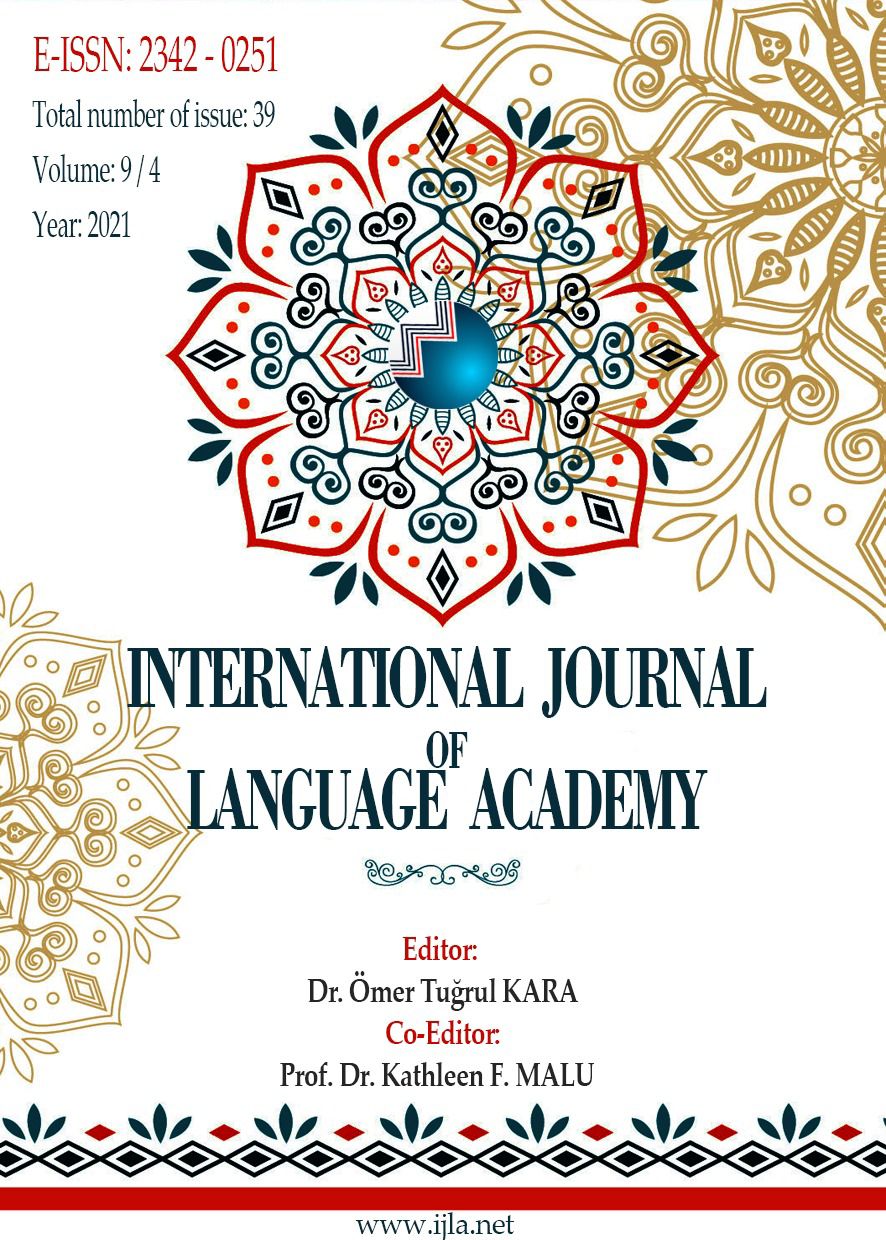READING TRAUMATIZED LIVES THROUGH CHILDREN’S LITERATURE: REFLECTIONS, REVERBERATIONS AND PRESUMPTIONS
Author :
Abstract
Keywords
Abstract
Matilda by Roald Dahl can be categorized as a children's story, but it can gain new dimensions through different readings by its readers as contributors in the production of the meaning. The characters in Matilda are described exaggeratedly; they are either unremarkable or possess supernatural powers. The traits, circumstances, and positions of specific characters are repeatedly underlined, which may seem too much to be a coincidence. It might thereupon be helpful to consider any information that could contribute to the analysis, including details that seem to be outside of the text but might be related to it, such as the life of its author. At this point, although semiotics carefully distinguishes between the author and the narrator, with the inclusion of translation purposes in the analysis, reading the author's life may become a necessity since the translator needs to know whose word s/he is to reproduce. In line with this, Matilda is analyzed from the perspective of the semiotics of translation in this study, and the emphasis put on the marginalities or marginalization of the characters is hypothesized to create “isotopies" (Greimas & Courtes, 1982, 163) and allude to people in Dahl's life. This analysis is supported by an emphasis on the "role of the receiver of discourse in the production of the meaning," which, like the concept of isotopy, is one of the operations of analysis developed by the Paris School of Semiotics and compiled by Öztürk Kasar (2009, p. 166-172) within the framework of her approach to the semiotics of translation. The analysis is further expanded from a feminist perspective, suggesting an analogy between gender-discriminatory discourses against girls in Matilda and against boys in Dahl's life. This study concludes that certain traumatic events in Dahl’s life may be thought to have prompted him to create characters who reflect people from his life, perhaps in an attempt to relay to readers particular critical perspectives on societies, families, and education systems, and perhaps quite unintentionally.
Keywords
- Childers, J., Hentzi, G. (1995). Columbia dictionary of modern literary and cultural criticism. New York: Columbia University Press.
- Dahl, R. (1986). Boy: Tales of childhood. London: Penguin Books.
- Dahl, R. (2001a). Boy and going solo. London: Puffin Books.
- Dahl, R. (2001b). Matilda. London: Puffin Books.
- Dahl, R. (n.d). “Death of Olivia”. Roald Dahl. Access (16.09.2019): https:// www.roalddahl.com/roald-dahl/timeline/1960s/november-1962.
- Encephalitis Society. (n.d). “Measles inflection and encephalitis”. Encephalitis Society: The Brain Inflammation Charity. Access (16.09.2019): https://www.encephalitis. info/Handlers/Download.ashx?IDMF=48aa149f-750d-42d8-823c-e9c414307525.
- Greimas, A. J., Courtes, J. (1982). Semiotic and language: An analytical dictionary. (Transl. Larry Christ, Daniel Patte, James Lee, Edward McMahon II, Gary Phillips, Michael Rengstorf). Bloomington: Indiana University Press.
- Neal, P. (1988). As I am: An autobiography. London: Simon & Schuster.
- Oh, J. (2010). "Your ticket inside the life of Roald Dahl." Interview. Access (24.07.2021): https://www.interviewmagazine.com/culture/roald-dahl-biography.
- Orwell, G. George Orwell’s Preface to the Ukrainian Edition of Animal Farm. Access (22.07.2021): https://www.orwellfoundation.com/the-orwell-foundation/orwell/ books-by-orwell/animal-farm/preface-to-the-ukrainian-edition-of-animal-farm-bygeorge-orwell/.
- Open Education Sociology Dictionary. Access (01.08. 2021): https:// sociology dictionary. org/gender-socialization/
- like-62810, [01.08.2021].
- Öztürk Kasar, S. (2003). “Sözceleme dilbilimi ve özne göstergebilimi”. Discours, Sémiotique et Traduction / Söylem, Göstergebilim ve Çeviri. ed. Jean–Claude Coquet, Sündüz Öztürk Kasar. İstanbul: Y.T.Ü. Yayınları.
- Öztürk Kasar, S. (2009). “Pour une sèmiotique de la traduction”. La Traduction et Ses Mètiers. Eds.: C. Laplace, M. Lederer and D. Gile. Caen: Lettres Modernes Minard, Coll. “Champollion 12”, 163-175.
- Scholastic Book Clubs. (n.d). “Interview with Roald Dahl”. Scholastic Book Clubs. Access (16.09.2019): https://clubs-kids.scholastic.co.uk/clubs_content/1491.
- Treglown, J. (2016). Roald Dahl: A biography [Kobo Books]. New York: Open Road Integrated Media, Inc. Access: Rakuten Kobo.
- The Conversation. (2016). The man behind Matilda – what Roald Dahl was really like. Access (01.08.2021): https://theconversation.com/the-man-behind-matilda-whatroald-dahl-was-really-like-62810
- Tuna, D. (2016). “Oktay Rıfat’ın Tecelli başlıklı şiiri ve çevirileri üzerinden çeviriyi göstergebilimle buluşturmak.” Selçuk Üniversitesi Edebiyat Fakültesi Dergisi. June. No: 35, 33-52. Access: http:// dx.doi.org/10.21497/sefad.51436.
- Tuna, D., Kuleli, M. (2017). Çeviri göstergebilimi çerçevesinde yazınsal çeviri için bir metin çözümleme ve karşılaştırma modeli. Konya: Eğitim Yayınevi.
- Tyson, Lois (2006). Critical Theory Today. A User Friendly Guide. 2nd Ed. New York: Routledge.
- Yanya, S. D. (2020). Examining themes of trauma and discrimination in Roald Dahl’s works from the viewpoint of semiotics of translation. (Unpublished master's thesis). İstanbul Yeni Yüzyıl University, Istanbul.





